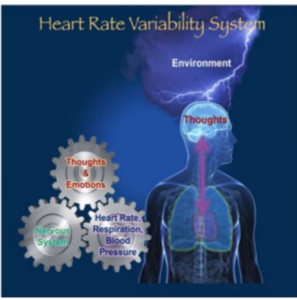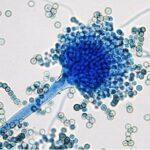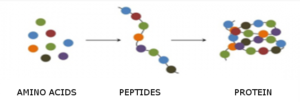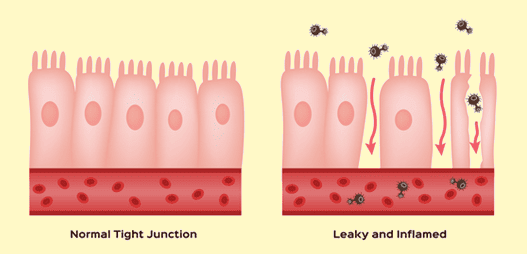
Do you want to know for sure? Of course you do, so read on for a quick and simple solution to knowing if you do and which ones are excessive and which ones are deficient.
You take supplements and you hope you are getting enough of the essential minerals. But how do you know for sure? Or perhaps you’re one who feels that you are consuming a healthy diet and you really don’t need to add any supplements to your diet. But how do you know for sure?
Most individuals would like to know if they are fully benefiting from the food and supplements they consume. And you should want to know. Here is one good reason: “Alongside dermatology and psychological disorders, nutritional disorders are among the most common problems encountered by clinicians. It has been estimated that over 70% of patients are at high risk of having or developing a nutritional deficiency…contributing to their illness” (Kotsirilos V. et al, A Guide to Evidenced Based Integrative and Complimentary Medicine. Sydney: Churchill Livingstone; 2011 p.14).
Many patients ask me what supplements they should be taking and while it is easy to make some educated guesses, it would be much better to know exactly what minerals were deficient and need additional supplementing and which do not.
Now determining the answer to this nutritional concern has been not only difficult but expensive. You see, using serum levels in the blood is really not accurate. Testing red blood cells or white blood cells improves things a bit but with that comes extra cost. What is lacking is knowing one’s actual tissue level of our minerals – and at a reasonable price.
Now besides concerns for our essential minerals there is another concern, perhaps even bigger – toxic/heavy metals like mercury, arsenic, aluminum and lead. Exposure to these metals is more commonplace than most realize and far more dangerous than is appreciated. But are you getting rid of them, eliminating them out of your body? That is the question and a very important question because these toxic metals can be terribly disturbing and damaging to our organs and tissues leading to dysfunctional biochemistry, disordered metabolic functions and chronic disease.
In fact, most functional health practitioners believe that in nearly all chronic diseases, including heart disease, cancer, autoimmune illness and neurological diseases, not only are mineral deficiencies to be found but these toxic metals will be present as one of the underlying reasons for that disease. Knowing if this is true for you is of utmost importance if you desire to stay well or to enable you to overcome whatever health concerns you may have.
So, what is the answer to this nutritional conundrum? We need to know our mineral status, if we have sufficient levels or not. And we need to know if toxic metals are clogging our metabolic machinery and destroying our health. But then we also need answers that are not ridiculously expensive and give us information that is truly accurate, based on what is in our cells (tissues), not outside our cells!
I believe the answer is OligoScan. A European developed Instrument, recently available to practitioners in the U.S.
In my desire to always find the best way to access and improve patient’s health, I am delighted to be one of the few practitioners in the U.S. to offer the OligoScan, an in-office, non-invasive (no skin puncture) instrument that determines the intra-cellular levels of 20 essential minerals/trace elements, 14 toxic/heavy metals, one’s level of oxidative stress, 7 vitamins and 15 graphics providing insight into multiple health risks. The 3-page report also includes the zinc/copper ratio and the sodium/potassium ratio, crucial to neurological and cardiovascular health and energy production.
Developed in France, after decades of research, the OligoScan is a sophisticated test that is simple to administer. After getting specific essential information, such as height, weight, age, and blood type, readings are taken using a spectrophotometer device at four different locations on the person’s non-dominant hand. Your data is uploaded to the OligoScan servers where it is analyzed against a vast database. You will see the results immediately! How awesome is that! With this information about your current state of health, better treatment decisions can be made for you.

What is spectrophotometry?
Spectrophotometry is a quantitative analytical method of measuring the absorption or the optical density of a mineral or chemical. It is based on the principle of absorption, transmission or reflection of light by the chemical or metal compounds over a specific wavelength range.
Spectrophotometry is used in many areas: chemistry, pharmaceuticals, environment, food, biology, medical/clinical, industrial and others. In the medical field, spectrophotometry is used to examine blood or tissue.
And for those of you who just have to have a little more technical information: Spectrophotometry determines the optical density of a substance. Every substance emits and absorbs frequencies, and more light is absorbed with increasing density. This allows for a quantitative analysis for each of the different minerals and toxic metals. And interestingly enough, light reflects differently depending on blood type (O, A, B, AB), so that is why I need to know your blood type when performing this test. (No worries if you don’t know your blood type. I use a simple, inexpensive test kit to determine that.)
In simple terms the elements present and the amount of their presence effects the light entering the cells and that determines the intensity of the electromagnetic signals picked up by the OligoScan instrument.
 How is the OligoScan different than tests such as blood, urine and hair analysis?
How is the OligoScan different than tests such as blood, urine and hair analysis?
Most of these other tests measure either circulating levels of minerals or metals, such as with blood testing, or what the body is excreting, as is the case with urine and hair analysis. OligoScan is unique in that it measures the levels of minerals and metals inside your cells.
The primary difference: The OligoScan measures intracellularly.
Blood tests show metals which have circulated recently. Metals are dumped within a few days from the bloodstream into the tissues. Blood can therefore only be used in acute situations for toxic metals. The level of minerals and trace elements is kept fairly constant in blood. Many people with muscle cramps often have a normal magnesium level in serum; the OligoScan in this case will commonly show a magnesium deficiency.
Urinalysis shows to what extent the body can excrete metals. In a normal spontaneous urine sample, almost nothing is excreted. Only after the body is provoked will increased metal concentrations be found in the urine. This is done with a challenge test for toxic metals. This is a valuable test that shows what amount metals are present in the extracellular environment. Again, the OligoScan measures intracellularly. The challenge test and OligoScan complement each other completely in this aspect.
Hair analysis shows which metals were present during the last 2-3 months. But if a body cannot detoxify well, low amounts of metals will be found in hair. This is called false-negative results. Hair analysis is even more questionable depending upon what treatments the hair has undergone and what agents have been applied to the hair.

Consider an example. A urine test for heavy metals showed high levels of lead and slightly elevated mercury. A chelating agent, which binds to heavy metals, was used to obtain this result. Keep in mind that different chelating agents are more selective for one or another of the specific metals. In this case, the test results showed a higher lead in the urine because of the specific chelating agent used. The OligoScan in the test above showed both these metals high in the tissues with mercury levels more elevated than the lead levels but the cadmium level even higher. The OligoScan provided a more accurate picture of what was occurring in the tissues, indicating that both mercury and cadmium were more of a problem than the lead.
Another example is seen in someone with high calcium in their hair analysis. On the OligoScan, the same patient may show a deficiency of intracellular calcium as they are not utilizing their calcium.
What to expect with your test
The actual measurement with the OligoScan is very simple. After I enter your data, including height, weight and blood type, the instrument is gently pressed on four points on the palm of the non-dominate hand. And really, that’s all there is to the test itself. The sophisticated software takes over from there and determines the effect to which the light beam is affected by the presence or absence of minerals and metals. The result is a 3-page report that you receive immediately, allowing you to implement any necessary changes right away.
The report provides you with an unpresented level of detail of your cellular health – these include important details of why you may be experiencing a reduced level of health, why you can’t seem to improve or what nutritional and toxic factors may be predisposing you in the future unless changes are made.
Why do you need this testing?
Heavy metals are highly degenerative to the body.
- Other healthcare practitioners currently using the OligoScan report 80% to 90% of their patients show excess heavy metals with aluminum being the highest. And I have found the same. The older the patient the greater the accumulation of toxic metals as, over time they build up when the rate of absorption is greater than the rate of removal.
- Accumulation of these metals in the body reduces the effectiveness of medical treatments up to 60%. It is, therefore, less likely that anti-oxidants and mineral supplements will be effective if heavy metals are present.
- We are exposed to these metals on a daily basis, so knowing how effective your body is at detoxifying them will allow you to improve that function if needed.
How often should I get an OligoScan?
OligoScans are very advantageous as not only can one tell what is going on in the body right at that time, but follow-up scans can show how one’s case is progressing. A follow-up scan may be performed anywhere from 4-6 months after the initial scan to make sure that the treatment protocol is working.
Can children be tested on the OligoScan?
Children who are two years and older can be tested using the OligoScan. It is an ideal way to obtain useful information, and your child will enjoy the fact that they will not be getting any needles!

If you’re feeling tired or run down, it could be due to mineral deficiencies or even heavy metal toxicity. But what do you do when you can’t face a battery of endless blood tests and visits to doctor’s waiting rooms? One answer is OligoScan. It gives me an unprecedented level of insight into your cellular health.
Having accurate and precise information on aspects such as anti-oxidants, heavy metal accumulation and mineral deficiencies is a real insight into what issues could be influencing your wellbeing.
Everyday symptoms such as fatigue, insomnia or build-up of stress can often be better understood in the light of this data. With a true understanding of your health on a cellular level, I am much better able to recommend a treatment program with dietary changes and supplements, in order to improve your wellbeing.
The OligoScan measures mineral deficiencies due to diet and food choices, the accumulation of heavy metals in the body and levels of antioxidants in the body – all at cellular levels. This means the test gives the most direct and immediate information possible on your health. It is significantly faster and more accurate than assessing urine or blood samples. The human body keeps the blood levels balanced for much longer than our tissues; therefore, the deficiency is first seen in the cells rather than in the blood itself. That’s why OligoScan can highlight issues that a normal blood test cannot.
And remember, the OligoScan requires no injections or blood taking; it is pain-free providing instant results which are more precise than a standard blood test.
Okay, What about Cost?
The OligoScan is a $130 test but when the test is completed with the initial or previous visit the price is reduced $30. It is a very popular test as individuals really want answers about their nutritional status and what metal toxins they are harboring. The company that developed the OligoScan sells me the equipment but for each test I send for analysis, I am charged an analysis fee – but that is well worth it as you will see when you take this test and have an OligoScan assessment. Don’t be in the dark get the assessment and be certain. Make the changes and be healthy.
Some scientific references:
The mineral intake
- Effects of thirty elements on bone metabolism
- Zinc in gut-brain interaction in autism and neurological disorders
- Magnesium in Prevention and Therapy
- Cancer-vitamins-minerals: Complex relation
- Bone and Nutrition. A novel function of phosphorus
- Recommendations for Manganese Supplementation to Adult Patients Receiving Long-Term Home Parenteral Nutrition
- Dietary Reference Intakes for Vitamin A, Vitamin K, Arsenic, Boron, Chromium, Copper, Iodine, Iron, Manganese, Molybdenum, Nickel, Silicon, Vanadium, and Zinc
- Dietary Reference Intakes for Calcium, Phosphorus, Magnesium, Vitamin D, and Fluoride
Toxic metals
- Toxicity, mechanism and health effects of some heavy metals
- Biomedical implications of heavy metals induced imbalances in redox systems
- Perspectives in endocrine toxicity of heavy metals
- The Epigenetic Effects of Prenatal Cadmium Exposure
- Oxidative stress and mitochondrial dysfunction in aluminum neurotoxicity and its amelioration
- Mechanisms of cadmium carcinogenicity in the gastrointestinal tract
- Insight into the oxidative stress induced by lead and/or cadmium in blood, liver and kidneys
Oxidative stress
- The Impact of Non-Enzymatic Reactions and Enzyme Promiscuity on Cellular Metabolism during (Oxidative) Stress Conditions
- Oxidative stress, mitochondrial damage and diabetic retinopathy
- The impact of base excision DNA repair in age-related neurodegenerative diseases
- A mitochondrial superoxide theory for oxidative stress diseases and aging
- Inflammation, oxidative stress and renin angiotensin system in atherosclerosis
- The Role of Oxidative Damage in the Pathogenesis and Progression of Alzheimer’s Disease and Vascular Dementia
 So, as you can see it would be easy for a Lyme diagnosis to be missed, causing the individual suffer for many months or years before they finally receive the correct diagnosis. Unfortunately, some will suffer with an autoimmune diagnosis or be diagnosed with some type of neurological disease without ever discovering their true undiagnosed cause.
So, as you can see it would be easy for a Lyme diagnosis to be missed, causing the individual suffer for many months or years before they finally receive the correct diagnosis. Unfortunately, some will suffer with an autoimmune diagnosis or be diagnosed with some type of neurological disease without ever discovering their true undiagnosed cause.



















